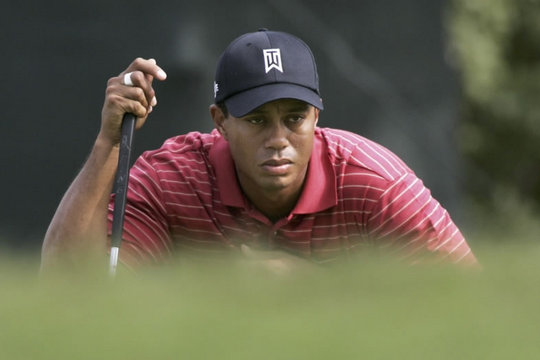It's Halloween.
Oct 31, 2009
Oct 28, 2009
Is A Card Cash?
 That is a really good question. Econblog tip of the hat to Paulding County correspondant Bruce Jones for sending this article along to the global headquarters.
That is a really good question. Econblog tip of the hat to Paulding County correspondant Bruce Jones for sending this article along to the global headquarters.Does this person have something here or are they just trying to stir up stuff just to stir up stuff?
Discuss.
Oct 27, 2009
A Good Read (From the AP classroom)
 I highly recommend this read by the political commentator Kevin Phillips. The following quote from Amazon summarizes the thrust of this work:
I highly recommend this read by the political commentator Kevin Phillips. The following quote from Amazon summarizes the thrust of this work:"In Bad Money, Phillips describes the consequences of our misguided economic policies, our mounting debt, our collapsing housing market, our threatened oil, and the end of American domination of world markets. America’s current challenges (and failures) run striking parallels to the decline of previous leading world economic powers—especially the Dutch and British. Global overreach, worn-out politics, excessive debt, and exhausted energy regimes are all chilling signals that the United States is crumbling as the world superpower.
“Bad money” refers to a new phenomenon in wayward megafinance—the emergence of a U.S. economy that is globally dependent and dominated by hubris-driven financial services. Also “bad” are the risk miscalculations and strategic abuses of new multitrillion-dollar products such as asset-backed securities and the lure of buccaneering vehicles like hedge funds. Finally, the U.S. dollar has been turned into bad money as it has weakened and become vulnerable to the world’s other currencies. In all these ways, “bad” finance has failed the American people and pointed U.S. capitalism toward a global crisis."
I found the chapters on the peak oil arguments and securitization to be chilling. You will want to share many of his insights with your students. I have my students read Freakonomics for their summer reading because they all read it cover to cover and the discussion generated is electrifying. ( I believe that I will be adding Super Freakonomics as assigned reading.) However, Bad Money could be a fitting addition to any student reading list.
-Amy Hennessy
SMG Leaders
 At the end of the 4th week of competition, a team from Westminter is your leader in the fall 2009 Stock Market Game. With a total equity of $206,309.31, they lead the second place team from Mountain View High in Gwinnett by a total of $45,983.05. Hats off to all of the teams out there that are making bank!
At the end of the 4th week of competition, a team from Westminter is your leader in the fall 2009 Stock Market Game. With a total equity of $206,309.31, they lead the second place team from Mountain View High in Gwinnett by a total of $45,983.05. Hats off to all of the teams out there that are making bank!Oct 23, 2009
Oct 20, 2009
Beware the Elephant
 Freakonomics authors Steven Levitt and Stephen Dubner have written a follow up to their hugely popular bestseller. Their new book, Super Freakonomics, (will the follow up to this be called Super Duper Freakonomics Supreme?) looks at the usual assortment of stuff... eating kangaroo's, pimping, terrorists and selfishness. They also write about what we should worry about. Once again, economics has the answers.
Freakonomics authors Steven Levitt and Stephen Dubner have written a follow up to their hugely popular bestseller. Their new book, Super Freakonomics, (will the follow up to this be called Super Duper Freakonomics Supreme?) looks at the usual assortment of stuff... eating kangaroo's, pimping, terrorists and selfishness. They also write about what we should worry about. Once again, economics has the answers. Oct 18, 2009
Oct 17, 2009
Weekend Reading
 And to think I was just complaining about having to drive in a little traffic to get my goods and services. Seems silly after reading about this situation. Gives new meaning to the term "underground economy" doesn't it?
And to think I was just complaining about having to drive in a little traffic to get my goods and services. Seems silly after reading about this situation. Gives new meaning to the term "underground economy" doesn't it?Oct 15, 2009
The Odds
 The odds an employed person 16 or older in Georgia is a post-secondary economics teacher are 1 in 11,970. The odds of you caring about these odds are about 1 in 6.
The odds an employed person 16 or older in Georgia is a post-secondary economics teacher are 1 in 11,970. The odds of you caring about these odds are about 1 in 6.The odds of you liking this website are 1 in 1.
A Good Read
 Read any good econ related books lately? Would you like to share these books with the rest of us? I am kicking off a new feature of the Econblog- "A Good Read". My hope is to have a bunch of teachers out there send in brief posts about their favorite econ related book(s). Could be this, or maybe this, or how about this? You decide.
Read any good econ related books lately? Would you like to share these books with the rest of us? I am kicking off a new feature of the Econblog- "A Good Read". My hope is to have a bunch of teachers out there send in brief posts about their favorite econ related book(s). Could be this, or maybe this, or how about this? You decide.Just let me know what your favorite read is, and why, and I will post it on the blog.
So let me begin with my selection- "Naked Economics" by Charles Wheelan. What I like most about this book is Wheelan's ability to put economic concepts (mostly macro) and theories into plain English. I routinely assigned this book as summer reading for my AP students and they did not hate it. What better endorsement can you get than that? 17 and 18 year old students did not hate it!
Money quote of the book, ""Economics should not be accessible only to the experts. The ideas are too important and too interesting." Yes and yes to that Mr. Wheelon.
Oct 14, 2009
How Can A Wing Be Boneless?
 For those of you that have been paying attention to this blog since its inception, you may recall a post I put up about the price of chicken wings leading up to the Super Bowl. Well, chicken wing prices have continued to increase since that time. Amazingly enough, chicken wing prices per pound are now higher than chicken breast prices per pound. The once lowly Buffalo wing is now fetching some pretty high prices.
For those of you that have been paying attention to this blog since its inception, you may recall a post I put up about the price of chicken wings leading up to the Super Bowl. Well, chicken wing prices have continued to increase since that time. Amazingly enough, chicken wing prices per pound are now higher than chicken breast prices per pound. The once lowly Buffalo wing is now fetching some pretty high prices.What are the chances that every single one of your students has eaten Buffalo wings? Pretty good right? Use this to your advantage. Give your students this article and have them pick out all of the economic concepts they can find. I bet they will come up with an extensive list that can be linked directly to the econ standards. SSEF1, SSEF2, SSEF3, SSEMI2, SSEMI3 quickly come to mind.
Econ really is all around us. Oh, and I think it's a good thing that wings originated in Buffalo and not Walla Walla or Sheboygan. Walla Walla wings just doesn't sound right.
Oct 13, 2009
Happy Happy Joy Joy
My four year old son just received his first credit card application in the mail today. I bet he could do some seriously massive damage in the Batman aisle of Toys-R-Us with that plastic beauty.
From the AP classroom
 Why can't the world's food supply be grown out of this flower pot? My students have tons of fun answering that question and applying it to the law of diminishing marginal returns. Lessons 25 and 26 in the Morton workbook will help reinforce this concept.
Why can't the world's food supply be grown out of this flower pot? My students have tons of fun answering that question and applying it to the law of diminishing marginal returns. Lessons 25 and 26 in the Morton workbook will help reinforce this concept.It is critically important for students to understand the relationship between marginal product and average product as well as the mirror image of those curves with the marginal cost and average variable cost curves! The calculus students normally have an easier time of understanding the derivative nature of marginal product, cost, and revenue yet all students must have this concept mastered in order to fully analyze the theory of the firm models.
Also, students will need to understand that marginal revenue is the slope of the total revenue curve and that the same applies with the marginal cost and total cost and total variable cost curves. I always use examples about test averages and batting averages to explain the relationship between marginal and average calculations. These lessons are some of my favorite ones to teach. Have fun with these curves!
Oct 10, 2009
Technology 2.0
 For me the 2009 Annual Meeting was all about learning how to effectively use technology in new and exciting ways to teach and learn economics.
For me the 2009 Annual Meeting was all about learning how to effectively use technology in new and exciting ways to teach and learn economics.In the last three days I have learned a great deal about podcasting, youtubing, teachertubing, RSS feeding and even a little bit about something called Doodle. In addition, I was given a sneak peak at a really cool online simulation/video game that is built around personal finance. (I will be posting more about this in the coming months)
There are so many amazing technologies out there that are really changing the way teachers teach, and students learn, economics. Wayyyyy back in 1984, when I was a clueless high school senior, I would have never dreamed of having the ability to listen to an interactive teacher lesson on my own time or the ability to contribute to a student built class wiki.
My head is spinning.
Oct 9, 2009
 This may be a website that interests you when you are thinking about teaching your personal finance standards. Plenty of really helpful information at the click of a mouse. Some of the cool visual "hook" stuff include a piece on what a trillion dollars looks like and the worst eight celebrity financial mistakes.
This may be a website that interests you when you are thinking about teaching your personal finance standards. Plenty of really helpful information at the click of a mouse. Some of the cool visual "hook" stuff include a piece on what a trillion dollars looks like and the worst eight celebrity financial mistakes.Oct 8, 2009
Arne Duncan In The House
 That's right people. The keynote speaker at lunch today was none other than Secretary of Education Arne Duncan. Secretary Duncan spent his time discussing the importance of financial education and the once in a lifetime opportunity all of us have right now.
That's right people. The keynote speaker at lunch today was none other than Secretary of Education Arne Duncan. Secretary Duncan spent his time discussing the importance of financial education and the once in a lifetime opportunity all of us have right now.A Duncan quote on the back of the DOE pamphlet handed out at the conference..."Education is not just an economic issue. It's a moral issue. It's the civil rights issue of our generation. We have an obligation to give every child in America an education that helps him or her succeed in a career and fulfill a role as an active, productive citizen."
Annual Conference
 Over the course of the next few days I will be blogging about the events, sessions, sights and sounds of the 2009 Council for Economic Education...National Association of Economic Educators...Global Association of Teachers of Economics Annual conference taking place this week in Washington, DC.
Over the course of the next few days I will be blogging about the events, sessions, sights and sounds of the 2009 Council for Economic Education...National Association of Economic Educators...Global Association of Teachers of Economics Annual conference taking place this week in Washington, DC.My goal this week is to find out more about innovative ways to teach economics to students in grades K-12 so that I can share this information with teachers back in Georgia.
The first gem I have come across is this interesting looking game. What kid wouldn't want to play something called "Budgetball"? What kid wouldn't want to wear oven mitts while trying to throw a ball around?

Oct 7, 2009
Walk On
So which lot was the fullest? The $40.00 lot of course. This is Atlanta I'm talking about. Only suckers walk nine blocks to do anything in the ATL. (Suckers and yours truly. I would not pay $40.00 to park on the front lawn of the White House if I was going there for dinner)
Once inside the dome I saw another nice little example of huge price discrepencies. The Mrs. and I were sitting in aisle seats in section 133. Price of a ticket in this section...$95.00. Directly across the aisle from me in section 134 were people who paid $250.00 for their seats. More or less the same view, same sound, same easy access to the pretzel stand all for an extra $155.00!
Oh, and the concert? Most incredible stage I have ever seen in my entire life. The rock and roll wasn't bad either.
Oct 3, 2009
Oct 2, 2009
Watch Them Grow
 I knew Wal Mart was all over the place but this really drives the point home. Looks to me like they have some room to grow up there in northern Montana. Sam Walton was really on to something.
I knew Wal Mart was all over the place but this really drives the point home. Looks to me like they have some room to grow up there in northern Montana. Sam Walton was really on to something.The same can be said for Ray Kroc and Howard Schultz. Check out this map to see how their little companies have expanded over the years.
Oct 1, 2009
Tiger, Tiger, Tiger Woods Y'all.....
This makes me think of the economic mystery lesson (find it on the VE3 disc) that explains why some pro athletes make so much money. Hats off to you Eldrick for specializing in what you do and doing it so well.
Subscribe to:
Posts (Atom)









